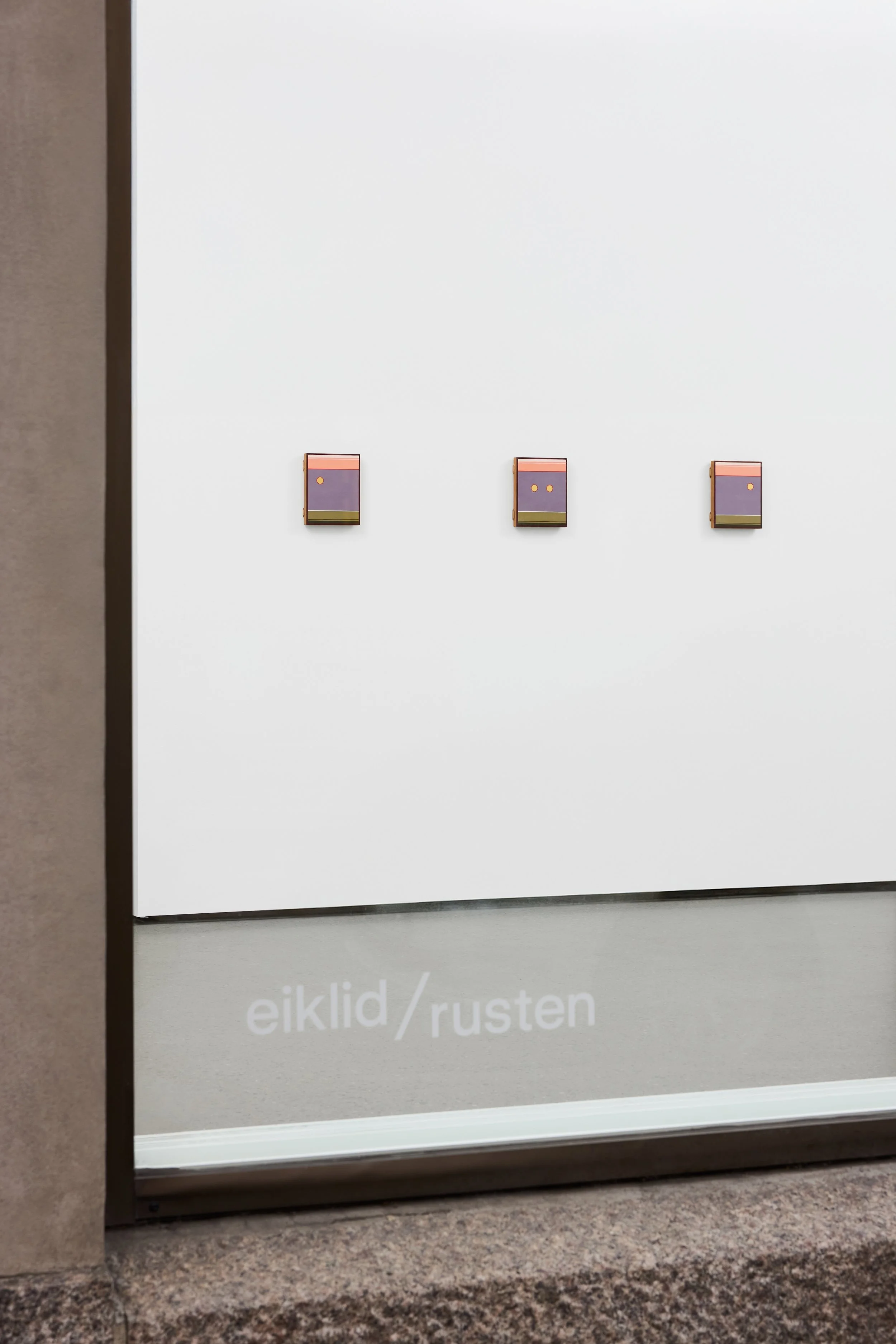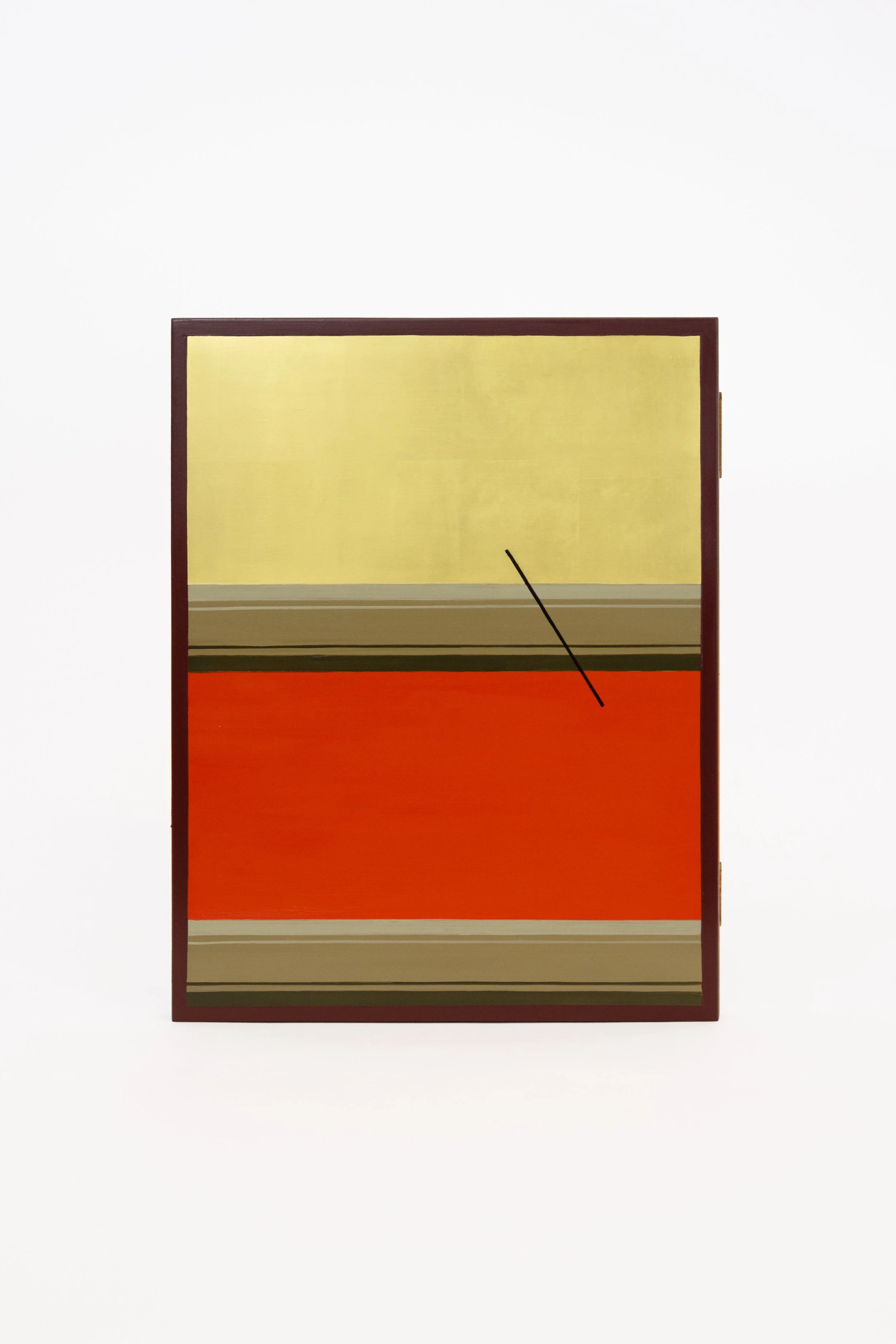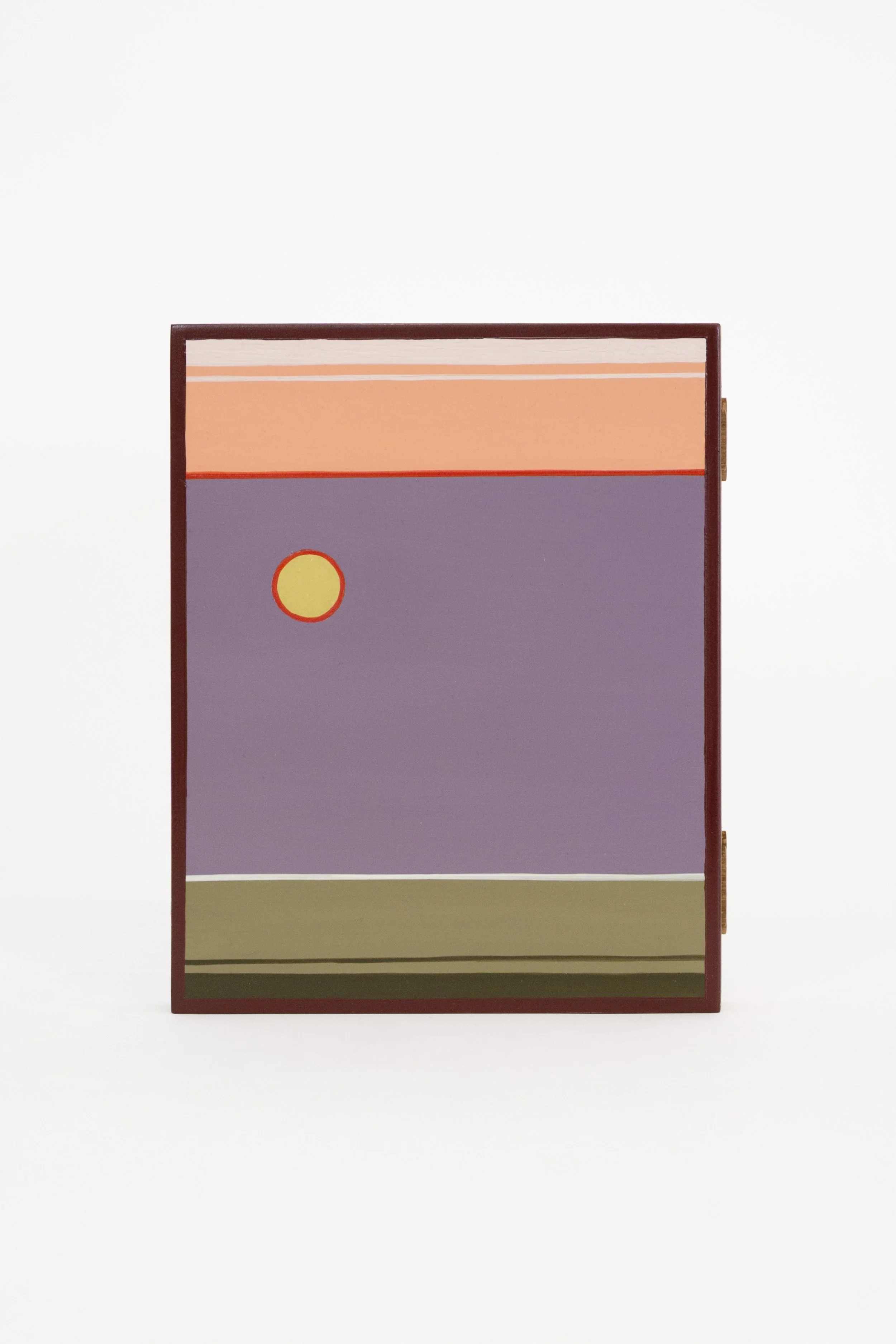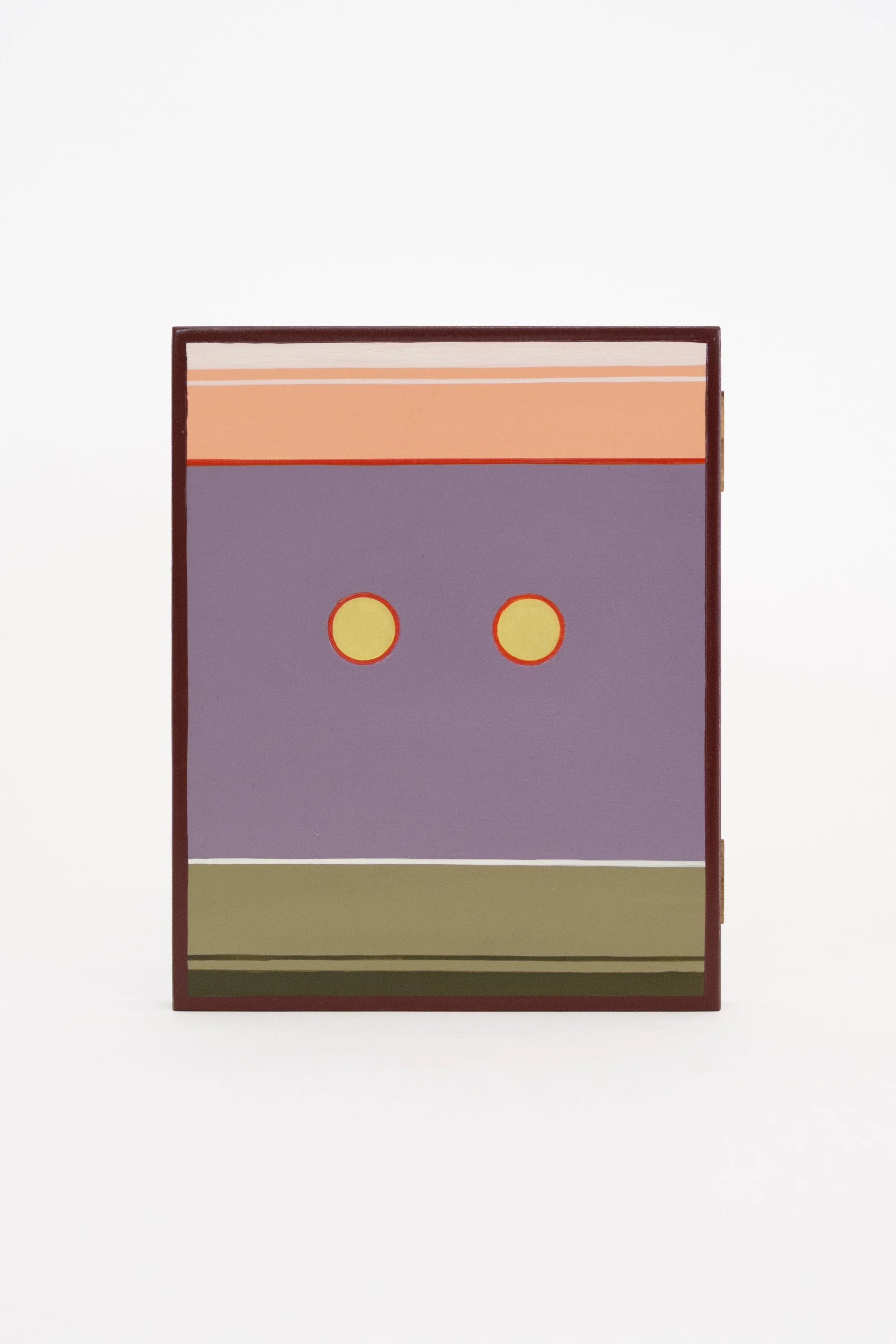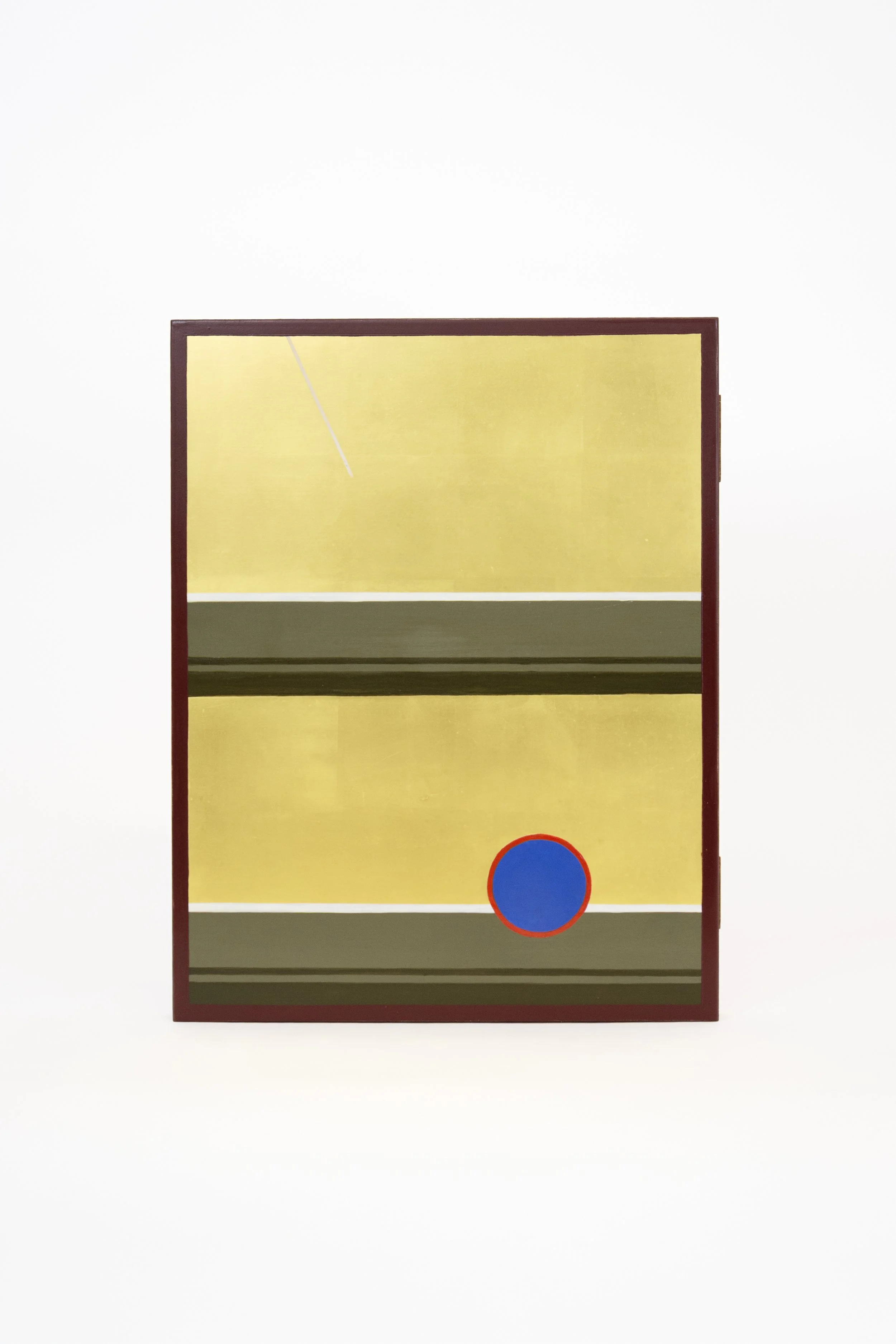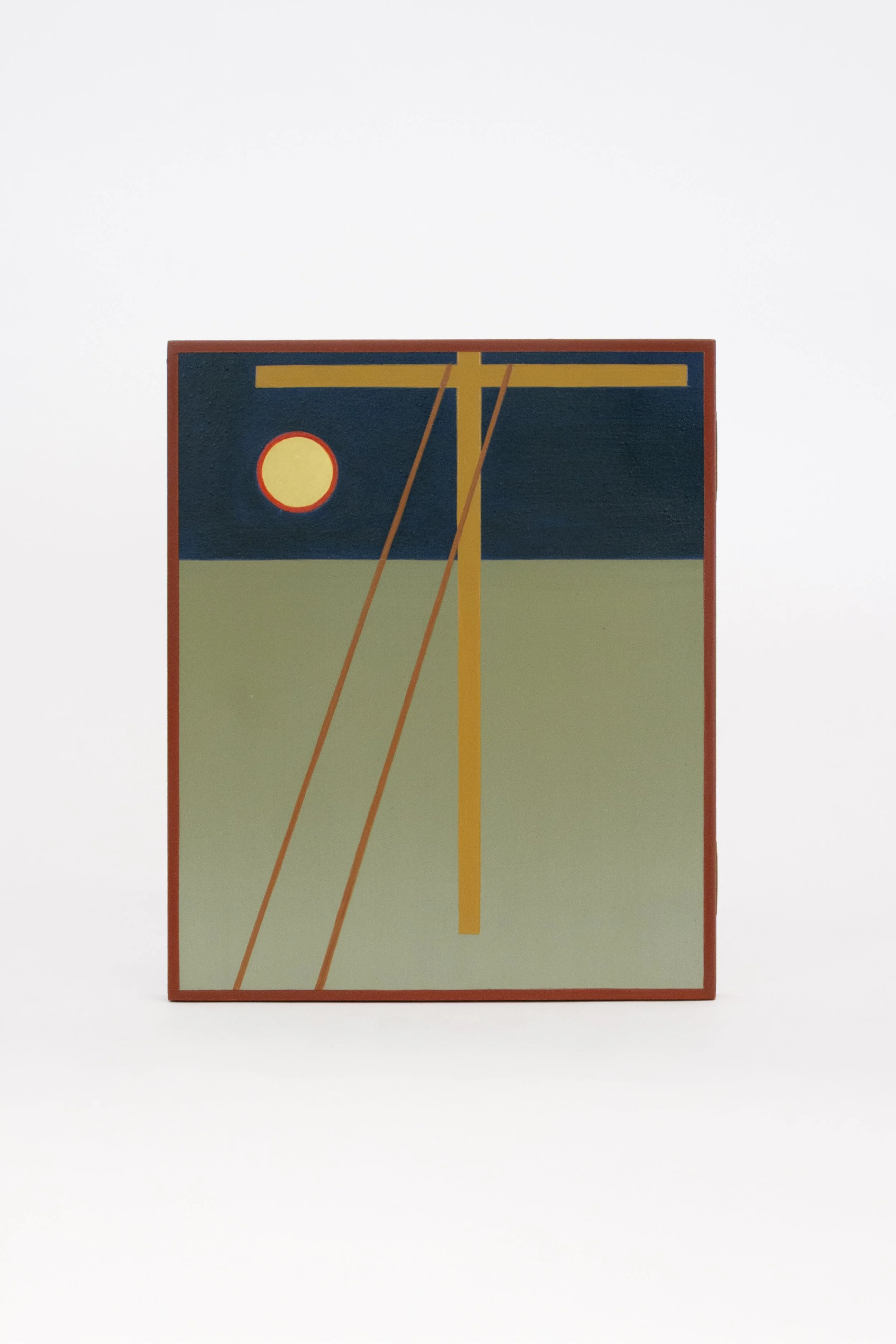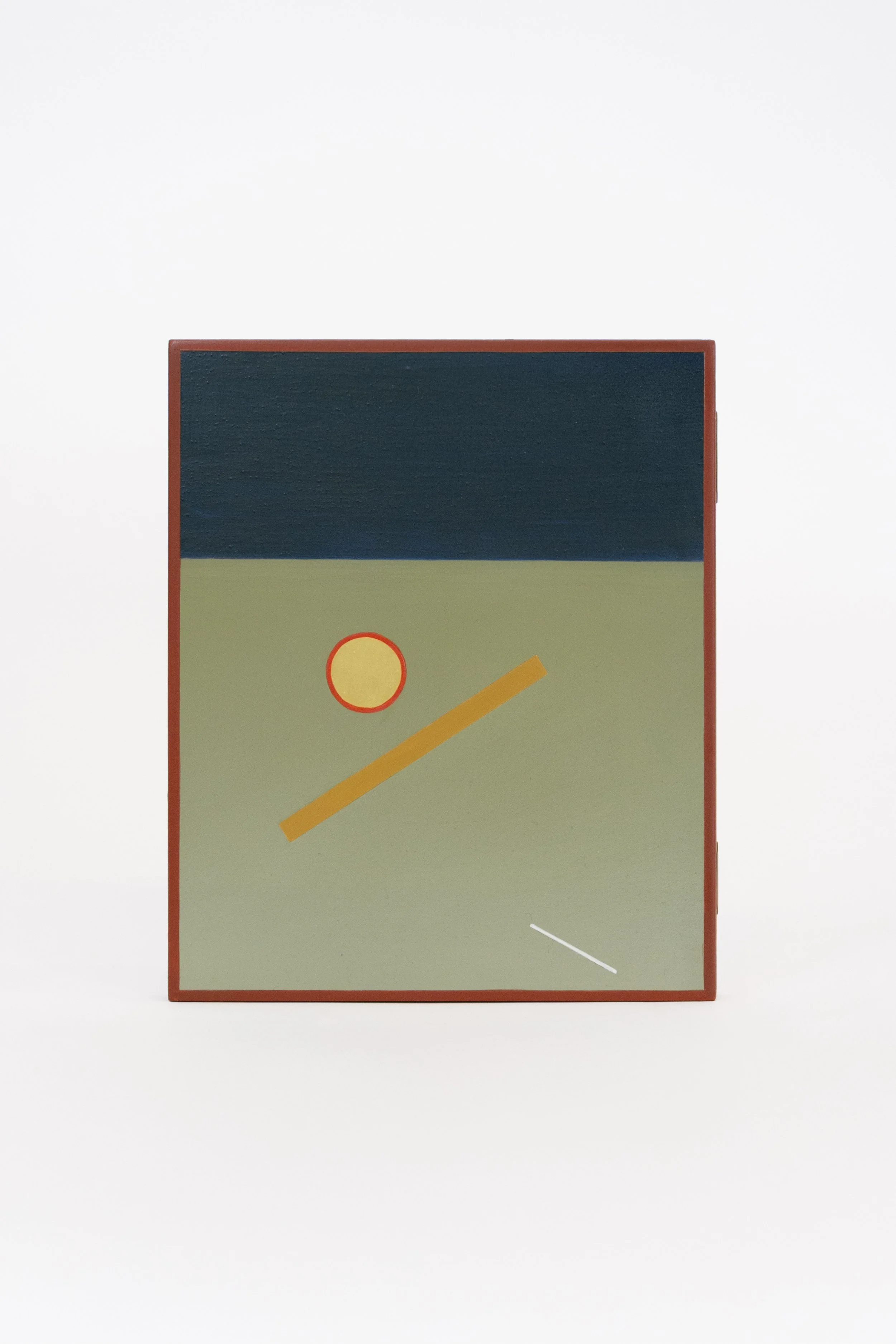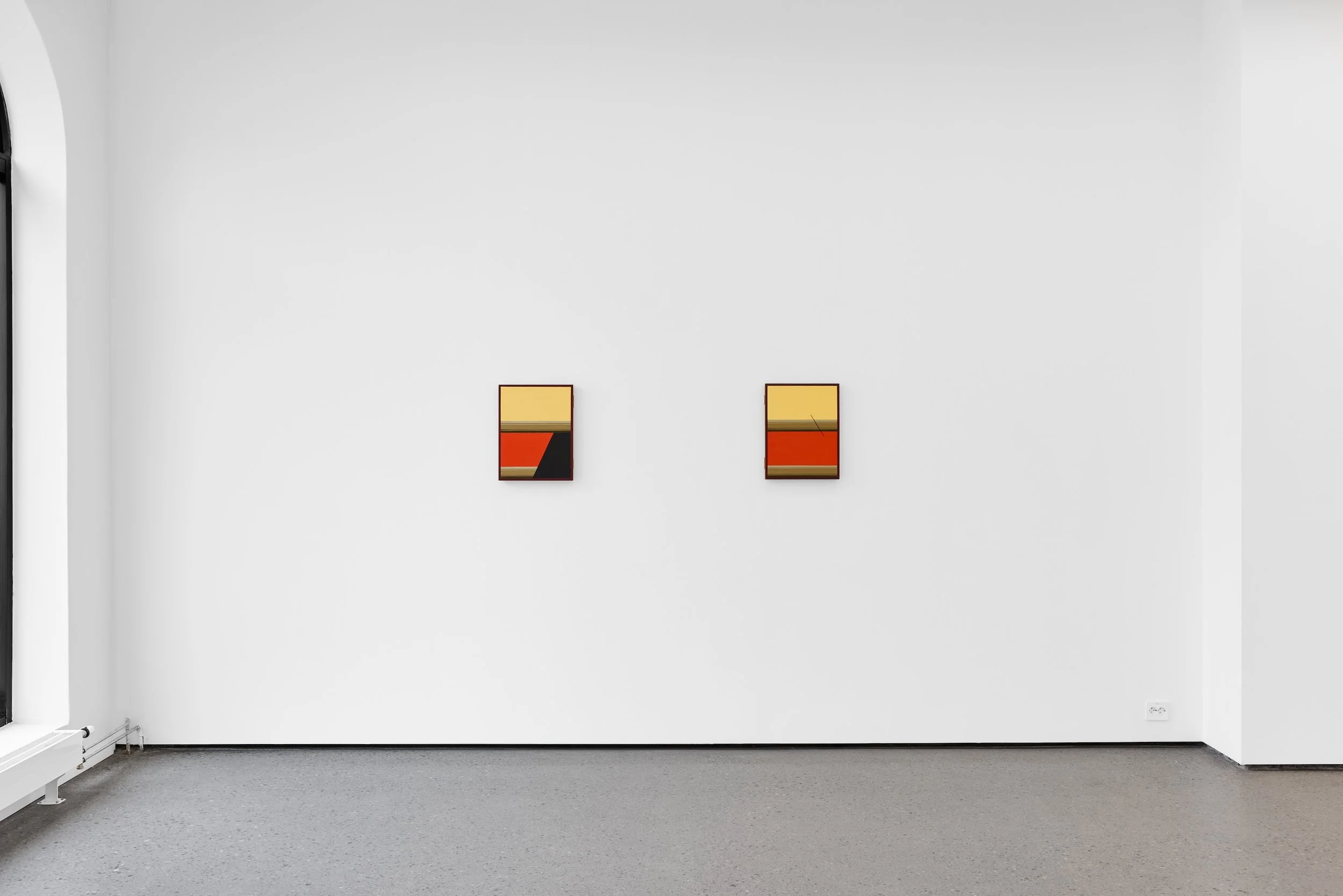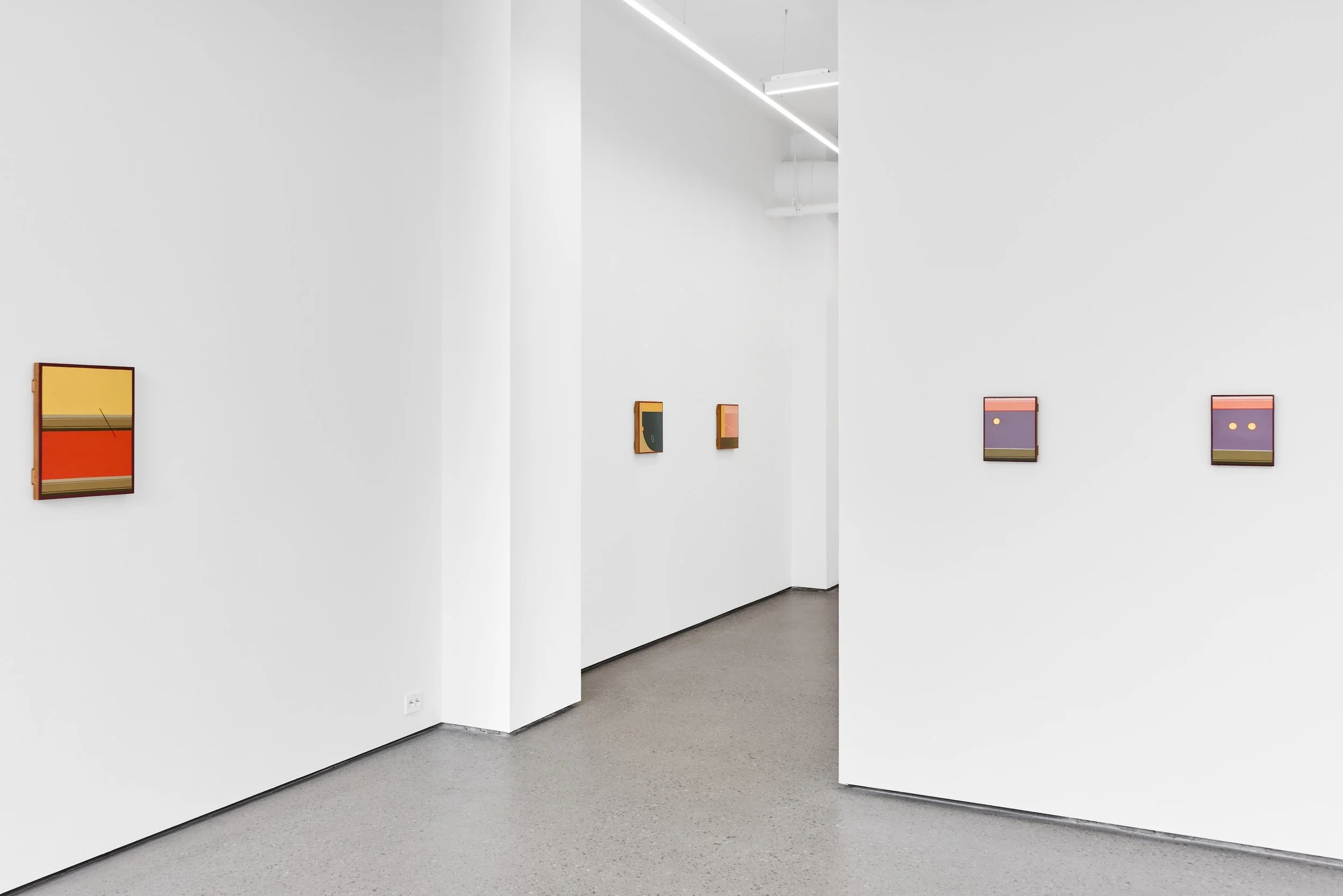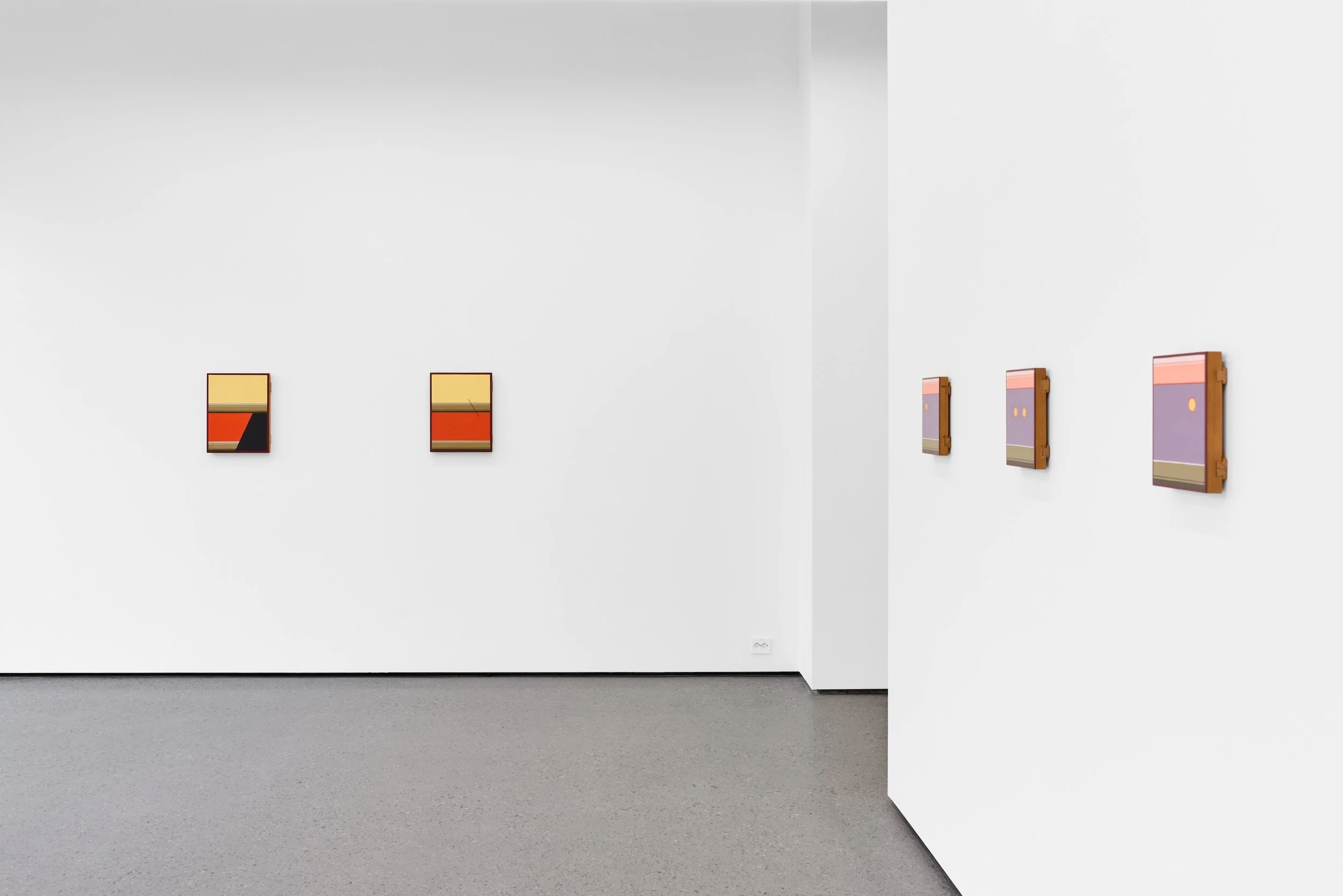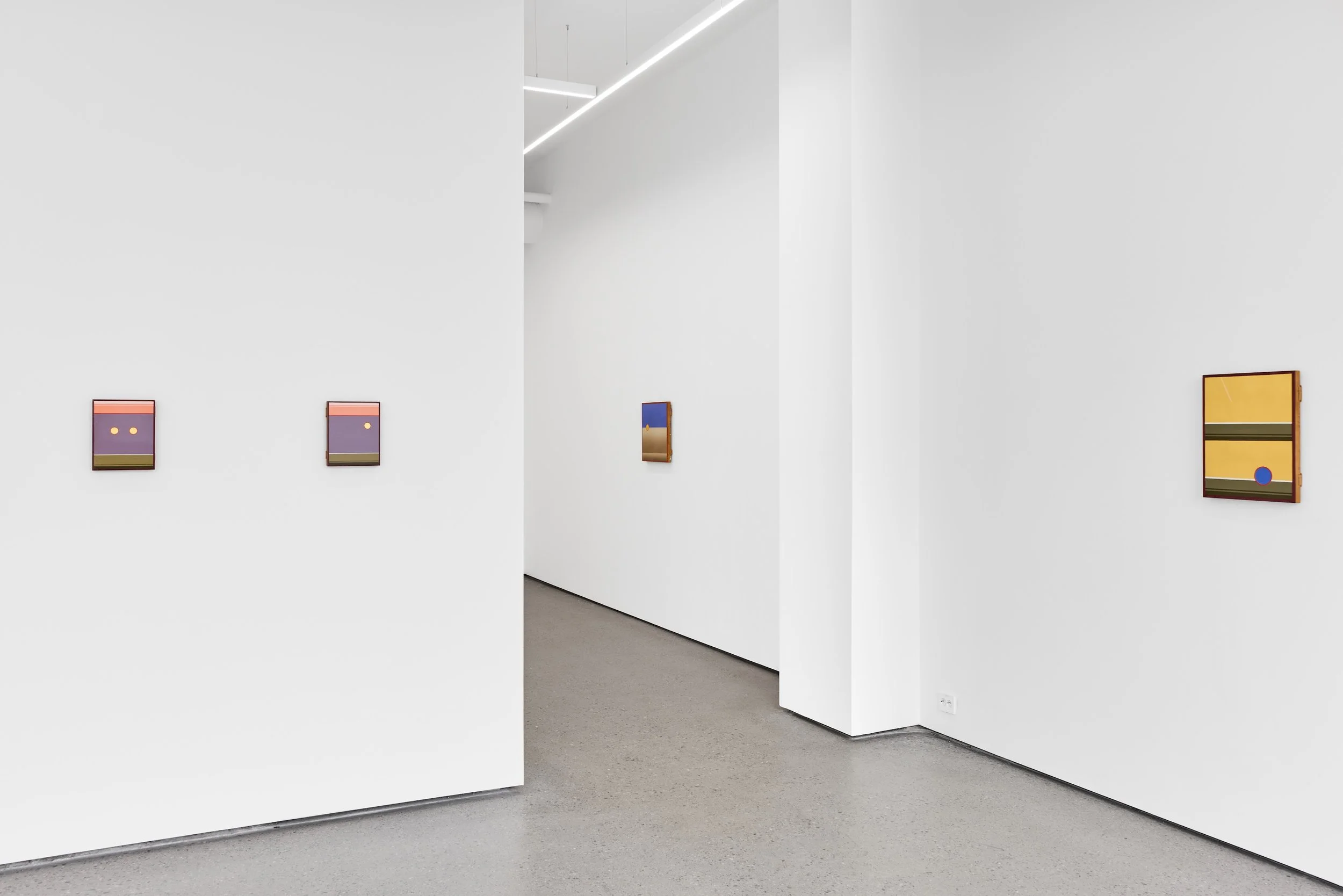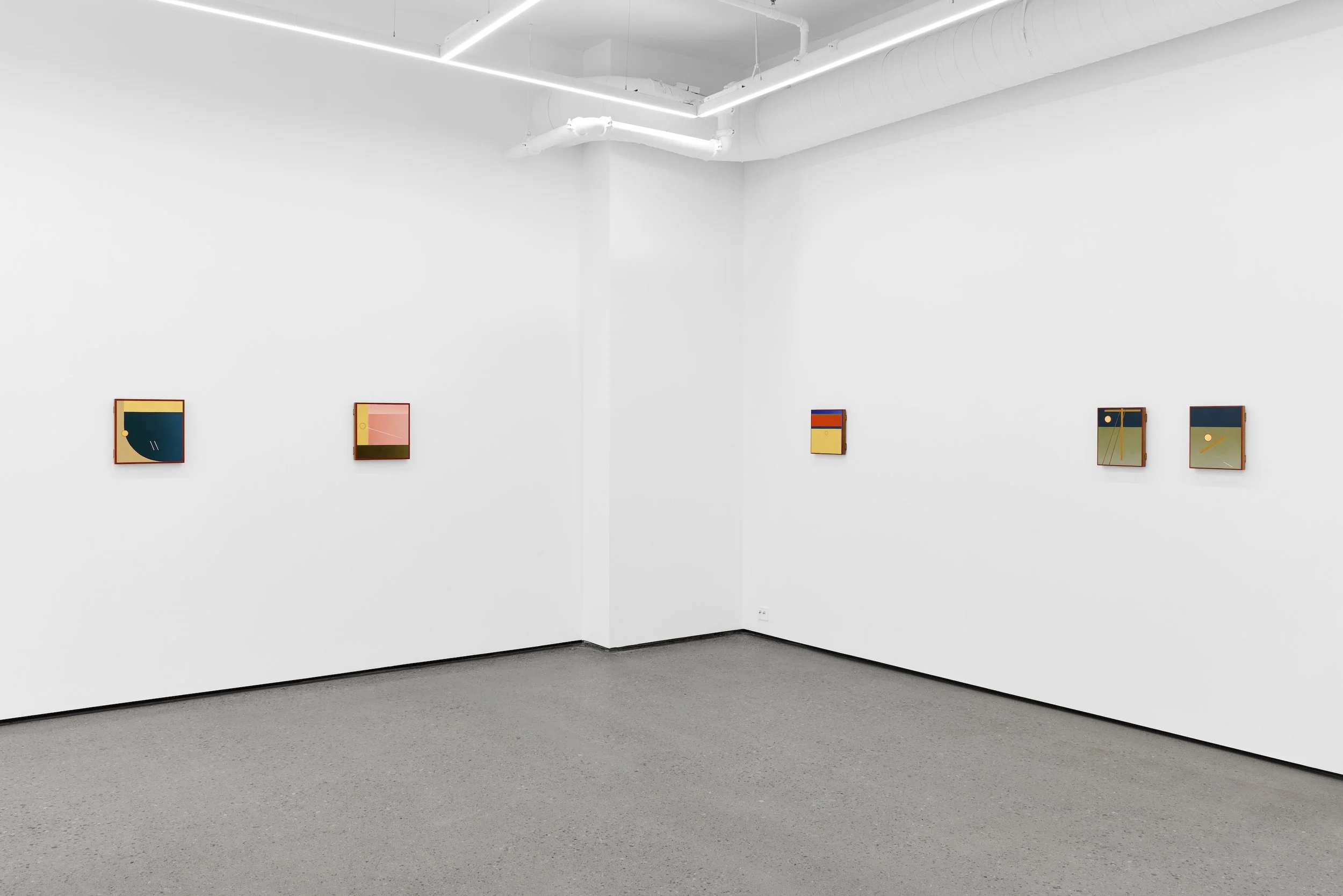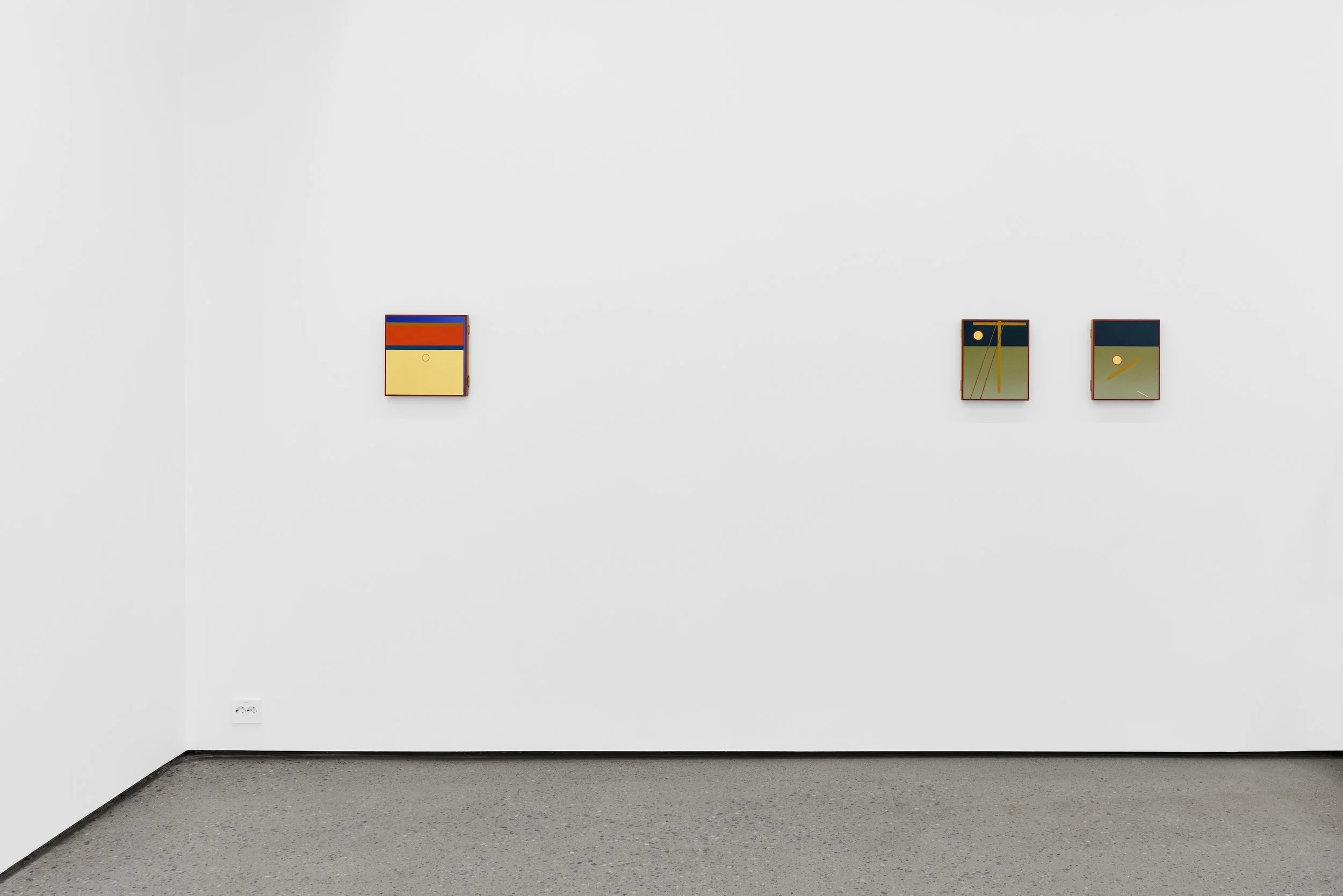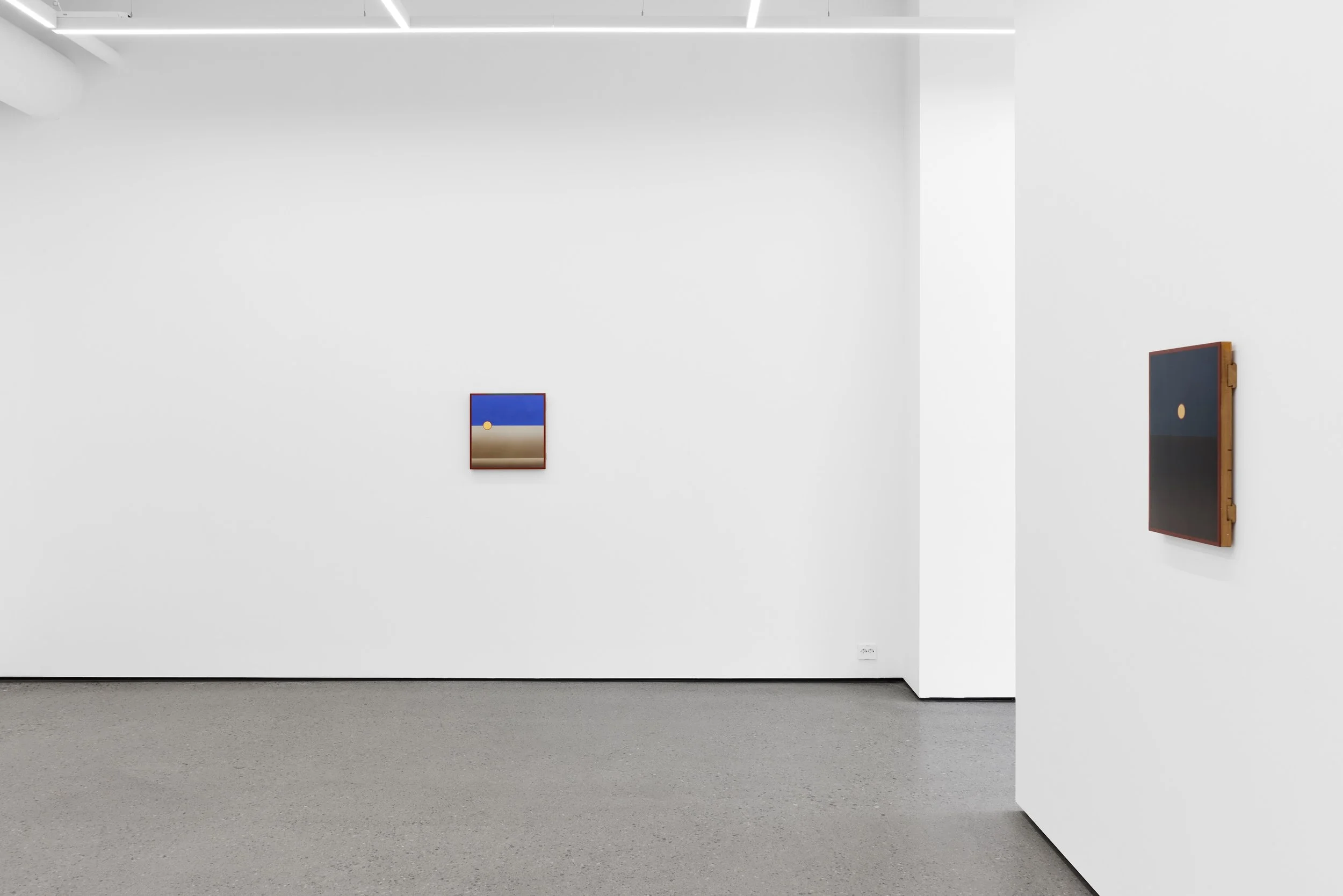Vera Klimentyeva
Doctrine of no matter
30 October - 22 November
Eiklid / Rusten presents a new body of work by Vienna-based artist Vera Klimentyeva (b. 1988, Moscow). Known for transforming historical iconography into contemporary abstraction, Klimentyeva draws from medieval manuscripts, sacred symbols, and traditional techniques to create paintings that oscillate between the spiritual and the political. Circles, lines, and horizons become vessels for reflection, inviting viewers to navigate the space between belief and interpretation.
EXHIBITION TEXT
The works of Vera Klimentyeva present themselves as compositions of controlled lines and composed surfaces. Monochrome fields in variation are calmly placed beside one another in rhythms rarely intersecting and barely touching. Some are organized in sequenced rectangles that align horizontally, while others entail a curve or angle that redirects the gaze. Each color is kept within its own confinement, and each form is deliberately placed. Reclaimed from the depths of art history, the paintings compose complex composites of presumed simplicity and assumed oppositions. From Orthodox Icons and the Russian avant-garde to Renaissance imagery and illuminated manuscripts, questions of contemporary discourse arise. Emerging from the paintings’ supposed lucidity, the inherent web of references, relations, and meaning from which they originate is pulled into a new circulation. Here, there is no immediate chronology or order of appearance, but a perpetual motion of multiple conversations.
In the exhibition Doctrine of No Matter, one can observe Klimentyeva’s pictorial expansion through her recognizable distribution of forms and their proximity. While attributes of the overall expression reference the visual language and spatial mediations of artists such as Kazimir Malevich and El Lissitzky, they are further explicitly anchored in artworks that predate our time by over a millennium. Where painters of the Russian avant-garde distanced themselves from the obsessions of the Renaissance and painterly means of figuration, Klimentyeva actively navigates her pictorial structures around it. This can be particularly observed in her repeated use of golden circles and their positions on the picture plane. Not only do they allude to the halo of divine figures in Christian imagery, but they also share the visual coordinates with specific renderings of celestial representations from the Early Modern period. Rendered in the ancient technique of egg tempera and gold leaf, the natural properties of the medium limit the ability to build nuance to the same extent as oil. However, as the paint dries matte and quickly, the application of color can be controlled, and the intrinsic contrast to the shimmering gold becomes amplified. As such, the optical movement of her motifs entails a tactile variation embedded within the method of her medium.
While Klimentyeva compiles a fluctuating array of references and compositions, the panels upon which they are painted prevail throughout her oeuvre. As subtle yet prominent components, these are no ordinary pieces of wood but Icon boards. Kept in Churches and domestic environments, the Icon holds a central position in Orthodox beliefs and is a frequent aspect of devotional practices. The boards used by the artist were initially produced with the purpose of becoming Icons, but are here granted another path. By physically anchoring her paintings in an object of religious devotion, underlying sentiments of heritage and tradition arise. This act is not one of severance, but one of deliberation, where tokens of the past are brought into the present with a reinvented contemplation.
As perceptible traces, where constructed truths no longer reside, the works of Vera Klimentyeva reexamine the residue of fallen tales and claims to power. Through an anachronic gaze on the structures of history, both that which is ours and that which belongs to art, Doctrine of No Matter poses a reflection that penetrates the external shield of faith and idealism. Mediating channels through which dominance has been asserted and destinies paved, hierarchies of meaning evaporate in favor of the liberty of thought. As contemporary amalgamations of Medieval conviction, Renaissance exploration, Modernist obsessions, and Orthodox objects, Klimentyeva’s paintings belong to no other constant but the self and its quest for reason.
- Pernille Dybvig, art historian
ARTWORKS
Vera Klimentyeva Untitled Manuscripts series, 2025 Egg tempera and gold leaf on wood 45 × 35 cm
Vera Klimentyeva Untitled Manuscripts series, 2025 Egg tempera and gold leaf on wood 45 × 35 cm
Vera Klimentyeva Untitled Manuscripts series, 2025 Egg tempera and gold leaf on wood 25 × 20 cm
Vera Klimentyeva Untitled Manuscripts series, 2025 Egg tempera and gold leaf on wood 25 × 20 cm
Vera Klimentyeva Untitled Manuscripts series, 2025 Egg tempera and gold leaf on wood 25 × 20 cm
Vera Klimentyeva Untitled Manuscripts series, 2025 Egg tempera and gold leaf on wood 45 × 35 cm
Vera Klimentyeva Untitled (renaissance), 2025 Egg tempera and gold leaf on wood 50 x 40 cm
Vera Klimentyeva Untitled (renaissance), 2025 Egg tempera and gold leaf on wood 30 × 30 cm
Vera Klimentyeva Untitled (renaissance), 2025 Egg tempera and gold leaf on wood 35 × 35 cm
Vera Klimentyeva Untitled (renaissance), 2025 Egg tempera and gold leaf on wood 35 x 35 cm
Vera Klimentyeva Untitled (renaissance), 2025 Egg tempera and gold leaf on wood 30 x 25 cm
Vera Klimentyeva Untitled (renaissance), 2025 Egg tempera and gold leaf on wood 30 x 25 cm
Vera Klimentyeva Untitled (renaissance), 2025 Egg tempera and gold leaf on wood 45 × 45 cm
INSTALLATION IMAGES
ABOUT
Vera Klimentyeva
(b. 1988, Moscow, Russia. Lives and works in Vienna, Austria)
Vera Klimentyeva’s practice is rooted in painting, where historical material and contemporary thought converge. Working with egg tempera, gold leaf, and limewood panels, she draws on the visual languages of Byzantine iconography, medieval manuscripts, and the early Italian Renaissance. Through these materials and traditions, she investigates how systems of belief, power, and perception are constructed and sustained.
Her paintings are acts of distillation. Figures, narratives, and hierarchies dissolve into measured compositions of lines, circles, and fields of color. Within these restrained structures, echoes of Orthodox icons and the geometry of early abstraction coexist. The devotional function of the icon gives way to a contemplative openness, where meaning arises through rhythm, proximity, and material contrast.
Klimentyeva’s use of original icon boards, objects once intended for worship, anchors her work in a physical and spiritual lineage. Yet her approach is not nostalgic. It is a contemporary reconfiguration of inherited forms, one that turns painting into a site for renewed reflection on image-making itself.
-
2005 - 2008: Moscow State University of Printing Arts, Graphic Arts Department, Prof. A. Livanov, Prof. V. Tzepilov, Prof. V. Kosynkin;
2008 - 2014: Academy of fine Arts Vienna / Abstract painting, Prof. Mag. Erwin Bohatsch.
2014 - 2018: Academy of fine Arts Vienna / Art and cultural Studies
-

